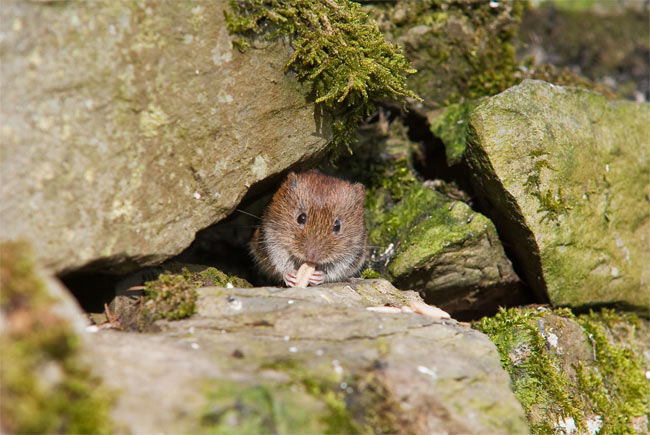Bigger Rodents Escape the Mainland to Island Getaways

Small rodents called field voles living on islands in the Baltic Sea are larger and sport longer hind feet than their landlubbing counterparts, new research shows.
The enhanced features allowed the islanders to swim from the mainland hundreds of years ago, leaving their less endowed kin in their wakes.
Field voles, which look like oversized gerbils with a body length of 3.5 to 4.5 inches (90 to 115 millimeters), live in parts of Europe, including Britain. They are known to migrate when their populations grow so large the individuals struggle for limited food and space. As groups of voles spread out, the result eases pressure on the resources. And so the ability to migrate would seem essential for the voles' survival, the researchers figured.
Island getaways
Major vole migrations took place in Sweden some 500 to 1,000 years ago, when mainland voles swam to islands that had emerged from the sea, creating the perfect study group for researchers to test the hypothesis that natural selection favors dispersal-enhancing traits.
Anders Forsman, professor of evolutionary ecology at Linnaeus University and his colleagues captured and bred mainland and island voles (Microtus agrestis) in a laboratory. They reared the young in identical conditions. They found that over generations, island voles produced larger young in larger litters.
Since food stress and environmental influences would affect all individuals similarly, we can be confident that the differences seen in body size and foot length, among captive-born offspring of mainland versus insular voles, reflected genetic differences rather than environmental effects," Forsman said.
Sign up for the Live Science daily newsletter now
Get the world’s most fascinating discoveries delivered straight to your inbox.
Big and bigger
The adult voles varied only in size, not shape. The longer feet and larger bodies made island voles better swimmers and less susceptible to hypothermia, the team found. It also made it easy for them to cover large distances. On average, the offspring of island voles weighed on average 1.6 ounces (45grams) and had hind foot length of about 0.8 inches (19.5 millimeters), while those of mainland voles weighed about 1.1 ounces (32 grams) and had hind feet that measured about 0.7 inches (18.5 mm).
The study found a direct link between body size of the voles and their distance from the mainland. In addition, the voles were larger in archipelagos where the islands were more spread out.
The larger hind feet could also have developed from their foraging habits," said Joan Roughgarden, a professor of biological sciences at Stanford University, who was not involved in the current study. She also believes these changes could be consistent with gene flow, a process by which genes are transferred from one population to another through migration.
Quick evolution
Forsman notes limitations to the study, but he doesn't believe they were significant enough to cause the differences in size and foot length they found.
"I think that the very large magnitude and unusually fast rate of these changes strengthens the notion that evolution can be much faster than previously recognized," Forsman said.
Since these changes are observable in different field vole populations that frequently die out or recolonize, the voles could help identify specific conditions that allow for such rapid evolution, he added.
The study results were published Aug. 4 in the journal Proceedings of the Royal Society B.









